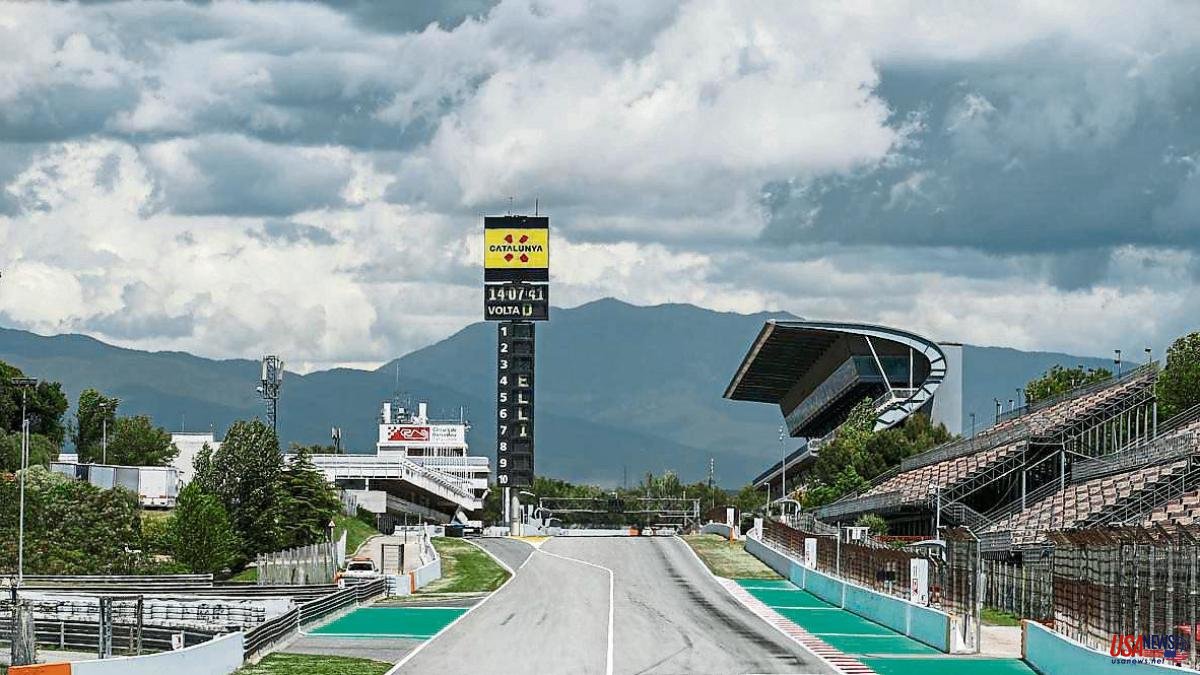At 31 years old, and before beginning to grow old in the face of the new sidereal motor venues, the Circuit de Barcelona-Catalunya has begun to accelerate towards a greener and more self-sufficient future. With the investment of 30 million euros contemplated in the 2022-24 Strategic Plan, the Montmeló facility wants to be more environmentally and economically sustainable, betting on innovation and digitization, as well as becoming a focus of industrial revitalization.
After a year of elaboration, the Strategic Plan, presented this Monday on the Montmeló straight, marks the path that the temple of the motor of Catalonia will follow. The 30 million euros of investment will serve to modernize and adapt the facilities to new needs. Thus, a first part, amounting to 5.5 million euros, has already been carried out since December with actions to reform the paddock (new drainage, pipes for telecommunications, hydrocarbon separator, comprehensive reform of the toilets, paving, doors of mechanized boxes and change of the system of electrical installations, water and fiber).
The rest of the programmed investment, some 26 million (17 in 2023 and 9 in 2024), will be allocated to three large projects. The main one will be the installation of 18,480 square meters of photovoltaic panels at checkpoints and in the Circuit buildings, including the entire roof of the Main Grandstand, which will be lined with solar panels. A pioneering storage system will also be installed to guarantee the facility's energy sufficiency, as well as electric chargers for public use.
Three actions with which the managers of the Circuit intend to turn the facility "into an energy generation platform", according to Roger Torrent, Minister of Business and president of the Circuit, who considers that the temple of the motor of Catalonia "will continue to be a world benchmark in the field of competition, as has been guaranteed with the renewal of the contracts for the Formula 1 and MotoGP championships until 2026”.
But the Strategic Plan is not only intended to ensure that the Circuit continues to be a benchmark for motoring, but it is also intended to give it added value, more content, to turn it into a "tractor" infrastructure for projects linked to green mobility, innovation and development. entertainment; an open circuit at the service of the country”, according to Torrent.
In this sense, the Strategic Plan intends for the Circuit to generate new income and "reduce the public contribution" to the facility's coffers. “There are no circuits of these characteristics that are economically sustainable without public contributions” – Torrent warned – “the cost of maintenance is very high”. Thus, in these 31 years the Generalitat endorses the F-1 GP (which costs about 22 million euros) and has had to periodically inject funds to cover the losses (from 2009 to 2020, 57 million accumulated). The claim of the managers is to "reduce public contributions to the maximum", without specifying a figure.
To this end, five new "business lines" have been defined: linking the Circuit with research and industrial development related to mobility and digitization; attract fairs and congresses; host music concerts; other sporting events (such as cycling, climbing or running); and e-sports.
The Circuit, the only track that hosts four world championship events (F-1, MotoGP, Rallycross and Superbike)–, generates 326 million euros per year, with a GDP of 181 million, a tax return of 49.3 million (in VAT) and 2,670 full-time equivalent employment contracts.













